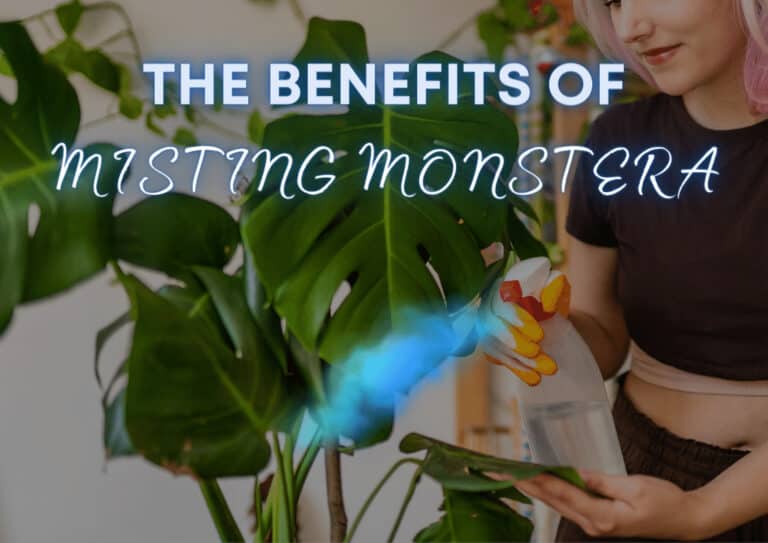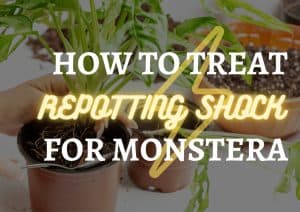The Benefits Of Misting Your Monstera Plant: Proper Techniques Explained
-
Chris Dosser
- May 21, 2023
If you buy something using the retail links in our articles, sometimes we earn a small affiliate commission. This does not impact the products we recommend.
Providing humidity through misting emulates the natural habitat of Monstera and helps to keep their stunning leaves vibrant and healthy. Additionally, consistent misting can also discourage pesky houseplant pests, such as spider mites, from making a home on our precious green companions.
Benefits of misting Monstera plants
Improved humidity levels
As Monstera plants are native to tropical regions, they thrive in a humid environment (80% humidity plus). I’ve noticed that by misting my Monstera plants indoors the elevated humidity levels cause the plant foliage to look fuller, fresher and overall healthier.
Enhanced plant health
In addition to improving humidity levels, the water droplets that settle on the leaves help to wash away any dust, which in turn allows the leaves to absorb more sunlight for photosynthesis. Cleaner leaves are more efficient at utilizing light and contribute to the plant’s overall health.
Reduced pest issues
Lastly, misting Monstera plants helps in reducing pest issues. I found that it deters common pests like spider mites by creating an environment that’s unfavorable for them. The increased humidity makes it difficult for such pests to thrive and thus contributes to a pest-free, healthy plant.

How to mist your Monstera properly
Choose the right spray bottle
I prefer to use a fine mist spray bottle made from materials like glass or BPA-free plastic. A quality trigger mechanism that is adjustable is a must to create a gentle even mist that covers a large area of the leaf rather than a concentrated jet of water.
When to mist
The frequency and timing of misting a Monstera plant are crucial to achieving optimal humidity levels. I usually mist my plant in the early morning or evening, avoiding times of direct sunlight as the water droplets could potentially magnify its rays and damage the leaves. In conjunction with my local climate, I determine when to mist by considering:
- Season: I mist more often in the warmer months (spring and summer) than in colder months (fall and winter).
- Indoor environment: If my home tends to be dry, I increase misting, while less frequent misting is sufficient in a more humid environment.
- Plant response: I pay attention to my Monstera’s health, adjusting misting frequency if its leaves look stressed, wilted, or unhealthy.
Our Favorite Monstera Plants And Supplies On Etsy
Misting technique
Proper misting technique is essential in ensuring the well-being and health of my Monstera plant. Here are the steps I follow:
- Position the spray bottle: I hold the spray bottle about 8-12 inches away from the plant to avoid hitting it directly, potentially causing damage.
- Mist the plant: I mist the leaves, providing a light, even coverage. The main goal is to raise the humidity around the plant, not necessarily to wet the surface of the leaves completely.
- Ensure air circulation: After misting, I make sure there’s adequate air circulation to prevent mold growth or rot. A small fan in the room or an open window can help.

Chris Dosser
Co-Founder of Eden Indoors
Chris is a self-taught horticulturist with over a decade of experience caring for houseplants and creating lush, thriving indoor oases. He specializes in Monstera, and by self admission has a serious problem with buying and propagating rare indoor plants!
Similar Posts
Is It Possible To Graft Monstera? (Aroid Propagation)
Variegated Monstera plants are rare to come by naturally and cost heaps to buy fully grown. So is it possible to graft a low cost cutting onto a non-variegated plant instead?
Monstera Repotting Shock (Plant First Aid)
Repotting shock is worrying to witness. What should you do when your Monstera plant's leaves turn yellow and droop after it is repotted?



